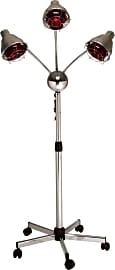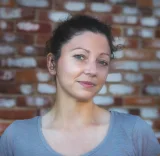The 10 Best Bonnet Dryers

This wiki has been updated 38 times since it was first published in June of 2015. Whether you're battling bedhead at home or you resent paying an arm and a leg for the privilege of a "scalp massage" in a fancy salon, a dryer hood or soft bonnet is the secret to achieving professional results. They work well on a wide range of hair types, including curly and wavy, and allow you to style and condition from the comfort of your own bedroom, bathroom or even living room. When users buy our independently chosen editorial picks, we may earn commissions to help fund the Wiki.
Editor's Notes
February 26, 2020:
When it comes to bonnet dryers, there are two main choices, the hair hood that attaches to a dryer and the typical bonnet unit (much like you'd expect to see in a salon). We've included both, with options that range in price. For the former, we like the Granteva Hood Attachment or the Hair Flair Deluxe Softhood. They're lightweight, portable, and affordable, but as with most, you'll need to be cautious about using high heat settings on your hair dryer, as prolonged exposure could cause them to melt. We've also kept the Laila Ali Ionic, which has its own blower, but its hose can become a little hot. For that reason, it may not be the best choice for the perpetually distracted or for those who have small children wandering around.
As for more robust choices, we've kept the Highland Venus Plus as a top selection. It doesn't come with a stand, but it's sturdy and not too tough to operate. Those for whom the lack of a stand is a deal-breaker might instead consider the Pibbs Kwik Dri or the Hot Tools Tourmaline. The base found on the latter can't take tons of abuse, though, so plan to treat it gently. Finally, we've opted to keep the Pibbs Lamp, which uses heat rather than air for setting and drying. Although it has enclosures around the bulbs to make burns less likely, you'll want to pay attention when it's in use, as it does become quite hot.
Special Honors
SalonPro Orbiting Infrared A hair-condom hooked up to a detachable blower won't set you back nearly as much as the SalonPro Orbiting Infrared, but for advanced technology that can pull off million-dollar looks without the help of a professional stylist, it may just seem like a modest investment. The simple control panel makes operating the heating element a breeze, and it's quiet, to boot. salonproequipment.com
Collins Temptura Ultra Because the Collins Temptura Ultra must be mounted to the wall, it's not a viable option for all home settings — and the hefty price tag doesn't help either. Salons, on the other hand, are likely to find it a useful tool, especially since it has an oversized hood and requires no hair net. collins.co
What Is A Bonnet Dryer And Why Do You Need One?
This is not only better for one's scalp, but also increases the longevity of the product.
Many people have seen bonnet dryers in professional hair salons but didn't realize they could have the same device in their home. A bonnet dryer consists of a large hood that sits over the hair, covering the entire head so it can evenly distribute heat. One of the biggest differences between bonnet and hand-held dryers, though, is the fact that the former gently circulates air, while the latter sends out strong blasts of it. This is not only better for one's scalp, but also increases the longevity of the product.
Bonnet dryers are not only used to dry the hair, they can also be used to help certain treatments. They help the hair better absorb deep conditioners and oil treatments, leaving your locks extra healthy and shiny. They can also help the hair take up color enhancements, letting highlights appear brighter. Since these appliances can be put on lower heat settings, they can minimize hair damage from drying, too.
One study on hair cosmetics found that because the actual heating element of bonnet dryers sits a certain distance away from the scalp, it is one of the safer methods of drying. Unlike hand-held models, bonnet dryers leave the user with full use of their hands, so they can read, type on their laptop or do other tasks while waiting for their hair to be ready. Even if the user does nothing at all while sitting under their bonnet dryer, that is better than putting continuous strain on their arm, the way they would with a hand-held model. Bonnet dryers have also been shown to reduce hair frizz more effectively than hand-held varieties, and are gentler on chemically over-processed hair.
Additional Features To Look For
If you are using your bonnet dryer to help curls set, make sure the hood is large enough to fit the rollers, while still leaving space between the heating element and your head. It's also important that the unit has a highly flexible arm, so you can adjust it to different heights, allowing you to sit on almost any surface in your home.
It's also important that the unit has a highly flexible arm, so you can adjust it to different heights, allowing you to sit on almost any surface in your home.
Some bonnet dryers attach directly to your existing hand dryer; simply connect the hose of the bonnet model to the nozzle of the hand-held model, and the heat from the latter will be directed up into the hood. These will usually be soft bonnet dryers, in which the hood is made from non-slip silicone, and covers the entire head, staying in place via a chin strap. Soft varieties are also more compact than the plastic ones since they can compress to be nearly flat when not in use.
The thicker the hair one has, the higher the wattage they will need in their dryer so as to speed up the process. People who struggle with dry, frizzy or brittle hair know how damaging hair dryers can be. In 2000, one inventor made a hair dryer that used a negative ion generator and a corona discharger to reduce frizz. Many bonnet dryers utilize this same technology. For ultimate versatility, look for a long and flexible air hose, so you can plug your dryer in almost anywhere you like.
If you plan on using your dryer to help treatments set, make sure it's made from chemical-resistant materials; this is safer for both the dryer and the user. Another important safety feature is the timer; many bonnet dryers allow you to set a cycle from anywhere between zero and 60 minutes, to make sure you don't accidentally overheat the machine, or damage your hair.
The History Of The Hair Dryer
Before hair dryers were invented, women had to be quite inventive if they didn't have the patience for hair to dry. Some women took to attaching a hose to the exhaust of their vacuum cleaners and using the clean air that came from here to dry their hair. In 1888, the French inventor Alexandre-Ferdinand Godefroy created the most primitive version of a hair dryer. His instructions stated the device could be connected to any type of heater, and it would send heat through a pipe, into a dome that sat over a person's head. Godefroy's dryer had an escape valve that let steam out, too, so the user's head would not overheat.
Even though Armenian American inventor Gabriel Kazanjian invented a hand-held blow-dryer in 1911, between the 1920s and 1960s, hair salons everywhere were purchasing Godefroy's design. However, the first dryers were very large and noisy and could take up to an hour to fully dry hair. During the 1930s, some salons turned to gas dryers, but these created too many fumes and were very damaging to hair. Eventually, salon owner Robert Hoffman developed an electric hair drying system, which became the standard for salons until around the 1950s.
Bonnet hair dryers were some of the first models designed specifically for at-home use. The original models used a plastic cap that sat over the head and a hose that attached to a suitcase style machine, which generated the heat and air.















